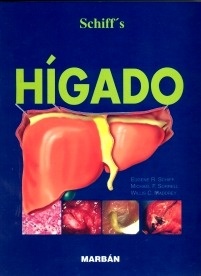Reseña o resumen
Robot-assisted surgery, soon to be incorporated into most surgical disciplines, can reduce postoperative complications by up to 50%, and has been shown to result in reduced blood loss, earlier hospital discharge, and faster return to normal activity for the patient. Edited by master surgeon Tony Costello, and with contributions from the world's best and most experienced robotic surgeons worldwide, Principles and Practice of Robotic Surgery is an up-to-date, all-in-one reference that provides step-by-step instruction for practicing surgeons and those who are entering robotic surgery training. This first-of-its-kind text discusses new technologies and their application in each surgical subspecialty, with hundreds of outstanding illustrations and high-quality videos making this an ideal resource for the entire OR team.
General principles
Anesthesia for robotic surgery
Physiology of pneumoperitoneum
Complications
Air embolism
Arrest etc
Preoperative assessment and patient selection
Patient positioning and prevention of injury
Bedside including port placement and docking
Draping robot
(basic understanding in order to be able to deal with trouble shooting)
Need all 4 arms to be draped even if not using
Port placement
Establishing pneumoperitoneum
Hasson
Veress
Optical
Insufflation pressure
Complications and trouble shooting
Eg. Adhesions, Obesity, Narrow pelvis, Prior surgery or radiotherapy, Existing stoma
Docking the robot
Modelled on Device teaching
Targeting
Ensuring adequate space between arms
Burping
Safety
e.g. height limitation
Locking instruments to avoid drift
Emergency undocking
Trouble shooting errors and faults
Instruments
Familiarity with commonly used laparoscopic instruments for the bedside assistant
Inserting and exchanging instruments
Diathermy settings
Console
How does it all work?
Basic rundown of buttons etc
Controlling the camera
Use of different lenses and changing view
Understanding when/why to use different lens
Swapping between instruments
Fourth arm control
Clutching
Customising your setup
Ergonomics
Scaling ratio movement
Adjusts movement speed to surgeon preference
Default 3:1, 2:1, 1.5:1
Available instruments
Diathermy settings
OPERATING
Basic surgical skills on the console
Haptics
Definition
Wrist movements
Understanding how the system works and how optimise use
Grasping objects
Passing items between hands
Cauterising
Settings
Knot tying
Suturing
Dissection and developing tissue planes
Emergency management
Vascular emergency
??other essential crisis management
Trouble shooting
Instrument out of view
Use instrument out of view visual cues
Only works if foot is on camera pedal
Poor vision
Switch dominant eye if smudge only on one side
Can adjust zoom if tissue close and there is spatter/diathermy smoke issue
Surgical skills for the bedside assistant
Fundamental laparoscopic skills
Safe instrument handling
Suctioning
Clipping
Stapling
Cutting
Specimen extraction
Trouble shooting
Loss of pneumoperitoneum
Port loss (inadvertent removal)
Port site closure
Undocking robot
Emergency and routine
Advanced aspects of operating
Haemostatic agents
Stapling
Fluorescence imaging
Tilepro
E.g. USS
Simulation Training for Robotic Surgery
Communication and human factors
Team based training
Operating room communication
Virtual Reality Simulator Training
Procedural Training
3D printed synthetic human organ hydrogel models (this model may soon replace animal and cadaver training in robotics)
updates could be included with scannable QR codes and searchable web links. These links will provide access to the latest instructional content for the major robotic surgery systems
SPECIALTY SPECIFIC OUTLINE
For each specialty
Other fundamental skills not covered in basic course?
Core procedures
For each core procedure:
Approach(es)
Equipment required
Patient positioning & operating room setup
Port placement
Docking
Step by step procedure guide operative steps/technique
Particular specialised skills required for this procedure
Urology
Nephrectomy partial nephrectomy pyeloplasty, intrarenal stone surgery, in surgery, nephroureterectomy, cystectomy, cystoprostatectomy, radical prostatectomy, retroperitoneal node to section.
General surgery
Hernia surgery including incisional hernia and mesh hernia repair. Colorectal cancer surgery. Upper gastrointestinal surgery including obesity surgery antireflux surgery and gastric surgery. Pancreatic surgery. Appendicectomy and gallbladder surgery.
General gynaecology and gynaecology Oncology
Hysterectomy oophorectomy endometriosis surgery
Radical hysterectomy radical ovarian surgery and retroperitoneal node to section
Sacrocolpopexy /incontinence surgery
Cardiac surgery

